Tips and recipes for how to remove epoxy stains and streaks
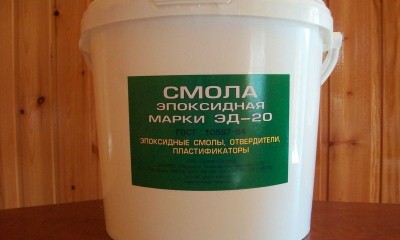 Epoxy resin is a substance that, when cured, acquires strength and resistance to external influences.
Epoxy resin is a substance that, when cured, acquires strength and resistance to external influences.
It is used in various renovation works, and in some areas of arts and crafts.
If work is done carelessly, stains and streaks may remain on the surfaces of materials, which are very difficult to remove.
How to wash off epoxy from various surfaces, we will tell in the article.
Content
Removal features
Epoxy resin is a complex multicomponent substance with a complex composition. It is its composition that makes it difficult to remove.
The resin of the trees is different. Coniferous resins contain only natural substances, and synthetic ones:
- silica,
- structure seals,
- fiberglass, etc.
Solvents can help remove such a composition. (homemade and commercial) that can soften cured polymer.
How to wipe with folk remedies?
You can erase resin stains not only with solvents, but also with household remedies that can be found on the farm. The choice of method should take into account the type of substrate material. Folk recipes may not be effective enough if you need to clean up large areas.
Dimexide
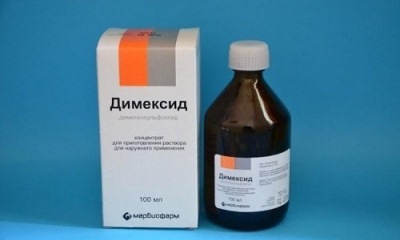 An organic agent, dimethyl sulfoxide, can be used as a dissolving agent.
An organic agent, dimethyl sulfoxide, can be used as a dissolving agent.
It is a liquid that does not have a pronounced odor and color. One of the most commonly used options is pharmacy Dimexide.
The product is well diluted with water. For use as a solvent, the composition is diluted 1: 3 and applied to the surface. Once the resin has softened, you can remove it.
Alcohol
Rubbing alcohol can be applied as a solvent resin. A sponge or napkin is impregnated with undiluted preparation and applied to the stain for 15-20 minutes.The viscous composition can be wiped off with the same cotton swab.
Oil
Vegetable oil has a mild effect. This allows it to be used to remove resin from skin, including in children.
To wash off, the sponge is soaked in oil and rubbed into the stain... You can even leave a cotton pad on the stain for a better effect for 10-15 minutes. After such exposure, the viscous composition is easier to remove.
Lemon acid
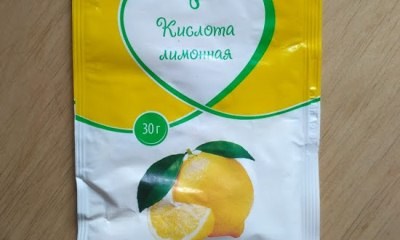 Regular citric acid will help to deal with spilled epoxy and smudges.
Regular citric acid will help to deal with spilled epoxy and smudges.
For processing you will need:
- container with water;
- lemon acid;
- sponge.
The stain should be treated section by section. Moisten the sponge, squeeze out excess water. After that, it is dipped in acid powder and rubbed.
It takes a very long time to process a large area in this way. But such the method is good in cases when it is necessary to clean the skin of the hands.
How to remove with acetone?
Acetone can be used as a solvent. Alternatively, a nail polish remover containing acetone.
Procedure:
- Moisten with a sponge.
- Apply to stain.
- Leave for 15-20 minutes.
- Try to erase.
For large stains, the acetone method may not work.
Denatured alcohol
Denatured alcohol - a solvent with a pronounced unpleasant odorwhich has wide application in industry. It can also be used to soften the resin.
Temperature methods of exposure
The epoxy resin application is designed for use over a limited temperature range. Excessive heating can cause the resin to become viscous, and freezing, on the contrary, makes the epoxy brittle. These physical properties allow the use of thermal effects for removal - heating and freezing.
Heat
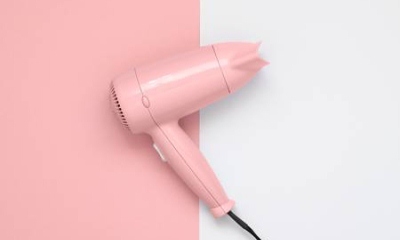 Using heat is one of the gentle methods... You can even use an ordinary hair dryer, but a construction one is better.
Using heat is one of the gentle methods... You can even use an ordinary hair dryer, but a construction one is better.
In order to get a good result, it is necessary to set a high temperature on the device.
The heating process should take place evenly - for this, the hair dryer is driven from side to side over the affected area. After the top layer of the stain has warmed up, it is carefully cleaned off with a spatula.
For epoxy, which has cured with a thick layer, warming up and using a spatula must be repeated several times... This will allow the entire composition to be removed neatly without damaging the base. Gradual stripping is a prerequisite, since the bulk layer is not able to warm up all at once.
The heating method can only be applied to heat-resistant surfaces.
Freezing
To remove epoxy from the surface, it can be frozen... For small items, such as clothes, placing the product in the refrigerator is acceptable.
After exposure to low temperatures, the resin is easily crumbled - it can be broken into pieces and shaken off, from dense materials - cleaned with a spatula.
The use of aerosol freezing agents must be carried out strictly in accordance with the instructions for a particular preparation.
How to remove with special compounds?
Ready-made solvents can be used to remove epoxy from various surfaces. These are chemicals that require proper storage and careful handling.
Solvent 646
The solvent has a wide range of uses... It can be used not only to remove stains, but also to clean the molds that were used to fill the epoxy, as well as the tools used.
Half of the composition is toluene.It also contains butyl alcohol, acetone and other components. The solvent is used in its pure form, applied with a napkin or sponge. After the epoxy has softened, everything is cleaned off and the surface is washed.
Products are produced in packaging of various sizes... 1 liter costs about 100 rubles, 10 liters - from 800 rubles.
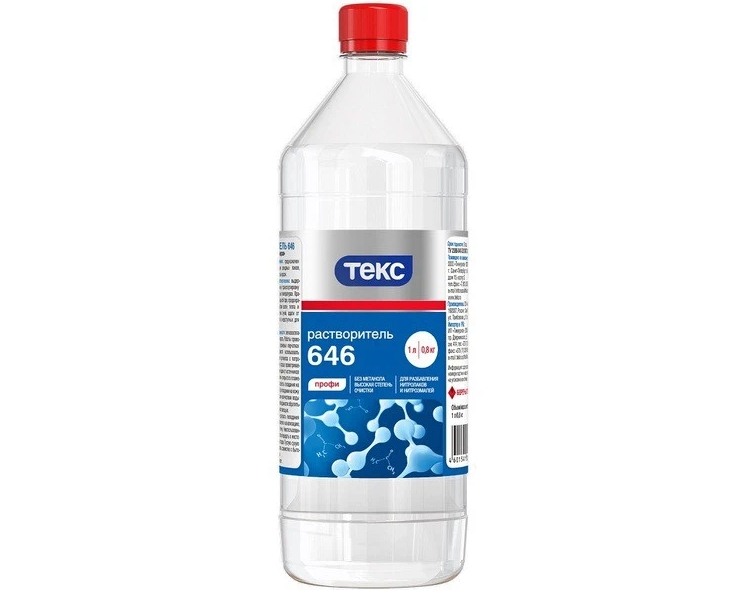
Flush SP-6
Remover is a chemical synthetic substance that softens epoxy. Having become plastic, it can be easily removed with an ordinary spatula.
The wash has worked well for removing resin from metal surfaces. For this the solvent must be applied to the stain for half an hourand then proceed with the removal.
The price of the wash is about 700 rubles for a container of 0.8 kg.
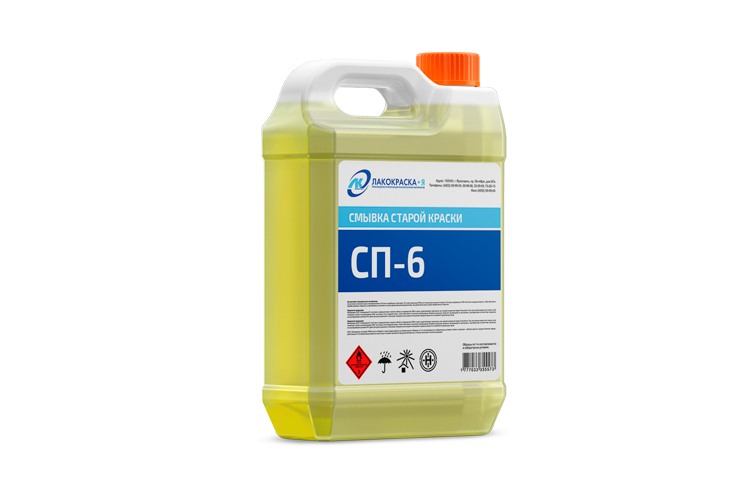
DOCKER EPOXY (G)
Professional epoxy remover is available in 13 kg and 5 kg containers... It is a gel mass. DOCKER EPOXY is capable of removing virtually all epoxy mixes. There are no acids in the composition.
If the surface of the epoxy is multi-layer, then the treatment can be continued. Restriction - the remover should not be on the material for more than 2 hours.
The price of a package weighing 1 kg is about 1,400 rubles.
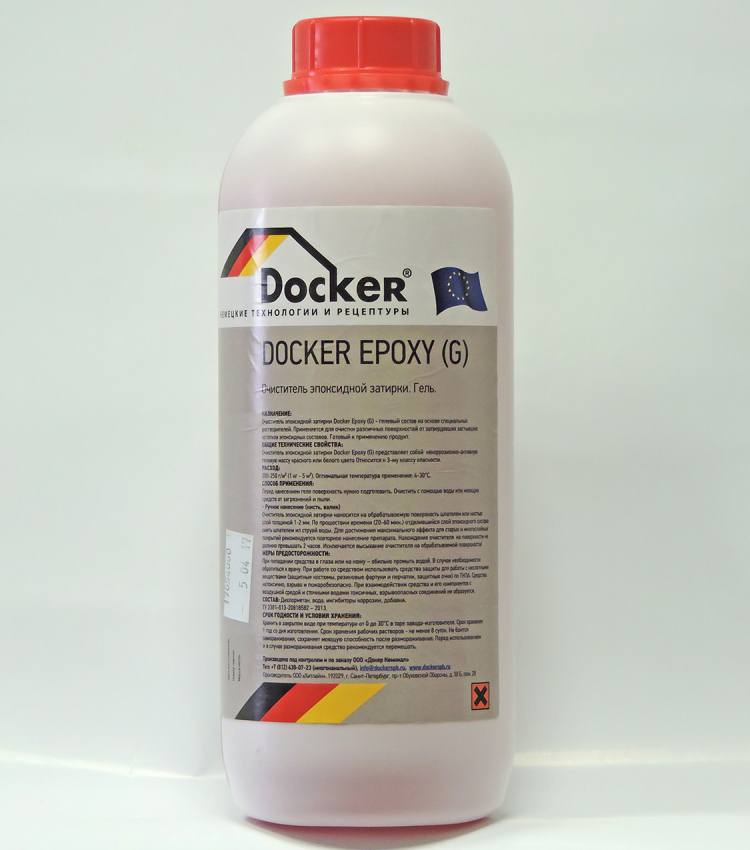
How to clean from different surfaces?
The resinous composition can be removed from various surfaces in various ways. It is imperative to take into account the type of material - this will avoid damage.
One of the highest demands is on removing dirt from the skin, as using inappropriate methods can cause irritation and even wounds. The easiest way to clean up smudges is from a hard surface that is temperature- and solvent-resistant.
From hands
Removing epoxy from the skin is a responsible undertaking. It is advisable to remove the composition immediately, when it just got on the skin.
It should be borne in mind that even seemingly safe formulations can cause irritation and overdrying of the skin. After using any of the products, you must thoroughly rinse off the composition and lubricate your hands with an emollient cream.
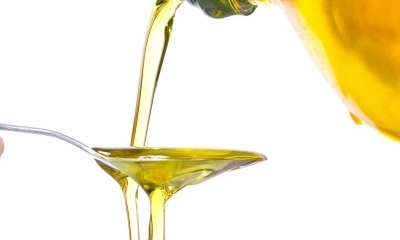 Best Removal Products epoxies, including from the skin of a child:
Best Removal Products epoxies, including from the skin of a child:
- the use of vegetable oil;
- applying greasy cream, etc.
The oily composition is liberally applied to the stained area and rubbed in. The resin will begin to come off very quickly. Use a washcloth or non-hard brush to speed up the process.
A method such as heating is not recommended for treating the skin.... It can cause burns. Ice cubes can be applied to the stained area to help scrape off the tar more easily. But this option requires very careful use so as not to cause frostbite.
If simple recipes do not help, solvents can be used to a limited extent. To do this, the tampon is impregnated with the agent and the area is carefully treated.
With plastic
Plastic is one of the most difficult surfaces to remove from resin. The use of solvents may be limited, and only in those situations when it is permitted according to the instructions for the preparation.
Heat can damage the plastic surface, lead to its deformation and loss of its original characteristics.
For some species, exposure to ice is suitable, but for thin, delicate surfaces that are not designed for temperature changes, the method using fats - cream, oil is suitable.
With fabric
It can be very difficult to remove the resin from the fabric. The porous material easily absorbs the substance, as a result of which the stain becomes resistant and difficult to remove.
For processing it is possible to use:
- pharmacy alcohol;
- turpentine with ammonia and starch;
- warming up from the inside out, etc.
Glass and tiles
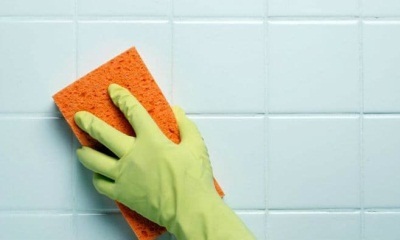 The smooth surfaces of glass and tiles are easy to clean when the resin has not yet had time to set. To do this, simply wipe the stain with a damp sponge.
The smooth surfaces of glass and tiles are easy to clean when the resin has not yet had time to set. To do this, simply wipe the stain with a damp sponge.
If the composition has managed to set, then heating and freezing methods are suitable... They will both be effective.
Heating should be done with care to avoid sudden temperature changes. The softened plastic resinous composition can be cleaned off, and the place can be wiped with a damp cloth.
Freezing is convenient to carry out using an aerosol can... After the surface cracks, the composition is cleaned off.
Chemical reagents - solvents are also suitable for use. After the resin has dissolved, it is removed, and the surface is washed using cleaning agents.
What not to do and why?
In an effort to quickly clean the stained surface from epoxy stains, it is important to avoid common mistakes:
- Exposure to sharp objects (knife, sharp side of a putty knife, screwdriver) in order to chip the influx of resin can damage any substrate.
- Hitting the resin to crush it can also damage the stained base. A hammer and similar tools are prohibited.
- Do not use solvents extensively - the impact should be local, affecting only the stained area. This is especially important in those cases when they are used to remove contamination from the skin.
- Do not use sulfuric acid as an epoxy solvent. It is a dangerous toxic drug that reacts with human skin, wood, metal and other materials.
Recommendations
Expert advice will help you cope with the task removal of epoxy resin is as simple as possible and without consequences:
- All work with solvents should be carried out with rubber gloves, with good ventilation.
- Expired solvents can be ineffective.
- Any use of chemical solvents must take into account how the substance used is capable of acting on the material that is soiled. To avoid trouble, it is important to study the instructions for the purchased drug in advance.
For recipes and tips for removing tar from various surfaces, see this section.
Related videos
How to dissolve epoxy resin, the video will tell you:
Conclusion
How to wash off the epoxy depends on what is stained and how strong the bonding agent has set. With the right approach, cleaning off the resin will not be as difficult as it might seem from the very beginning. The main thing is to act consistently, in compliance with the technology and application rules.



